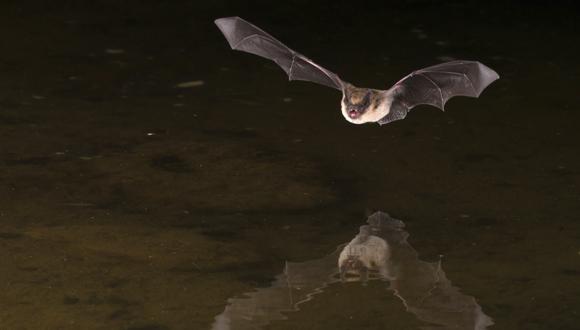TAU finds first mammal that hibernates at warm temperatures
Tel Aviv University research changes the concept of hibernation
Many mammals — and some birds — escape the winter by hibernating for three to nine months. This period of dormancy permits species which would otherwise perish from the cold and scarce food to survive to see another spring. The Middle East, with temperate winters, was until recently considered an unlikely host for hibernating mammals.
New research published in Proceedings of the Royal Society of London by Tel Aviv University researchers is set to not only correct this fallacy but also change the very concept of hibernation. Prof. Noga Kronfeld-Schor, Chair of the Department of Zoology at TAU's George S. Wise Faculty of Life Sciences, and doctoral student Dr. Eran Levin found two species of the mouse-tailed bat (the Rhinopoma microphyllum and the R. Cystops) hibernating at the unusually warm and constant temperature of 68°F in caves in Israel's Great Rift Valley. From October to February, these bats were discovered semi-conscious, breathing only once every 15-30 minutes, with extremely low energy expenditures.
"Hibernation in mammals is known to occur at much lower temperatures, allowing the animal to undergo many physiological changes, including decreased heart rate and body temperature," said Prof. Kronfeld-Schor. "But we have found these bats maintain a high body temperature while lowering energy expenditure levels drastically. We hypothesize that these caves, which feature a constant high temperature during winter, enable these subtropical species to survive on the northernmost edge of their world distribution."
Taking their temperature
The researchers monitored the activity of the bats during this period and found that they neither fed nor drank, even on warm nights when other bat species were active in the same caves. The researchers used heat-sensitive transmitters to measure the bats' skin temperature in the caves. Then in the laboratory, they measured the bats' metabolic rates and evaporative water loss at different ambient temperatures.
The bats' average skin temperature in the caves was found to be about 71.6°F. Both bat species reached their lowest metabolic rates at cave temperatures (about 68°F). During hibernation, the bats also exhibited long periods of suspended exhalation.
"Until recently, it was believed that there was no mammalian hibernation in Israel, apart from hedgehogs," said Prof. Kronfeld-Schor. "But this discovery leads us to believe there may be others we don't know about. Scientists haven't been looking for incidences of hibernation at warm temperatures. This is a new direction for us.
"The second main finding is that hibernating animals don't need to lower their body temperatures in order to lower their energy expenditure. These bats exhibited dramatic metabolic depression at warm body temperatures in the hottest caves in the desert."
The researchers found that the bats, like camels, flare their nostrils to conserve water. A month before hibernating, they also changed their diets from unsaturated to saturated fats, feeding only on queen ants with wings to gain a 50 percent increase in body mass.
The researchers are further exploring the importance of heated caves for the conservation of these species.
This article was originally published by AFTAU.





